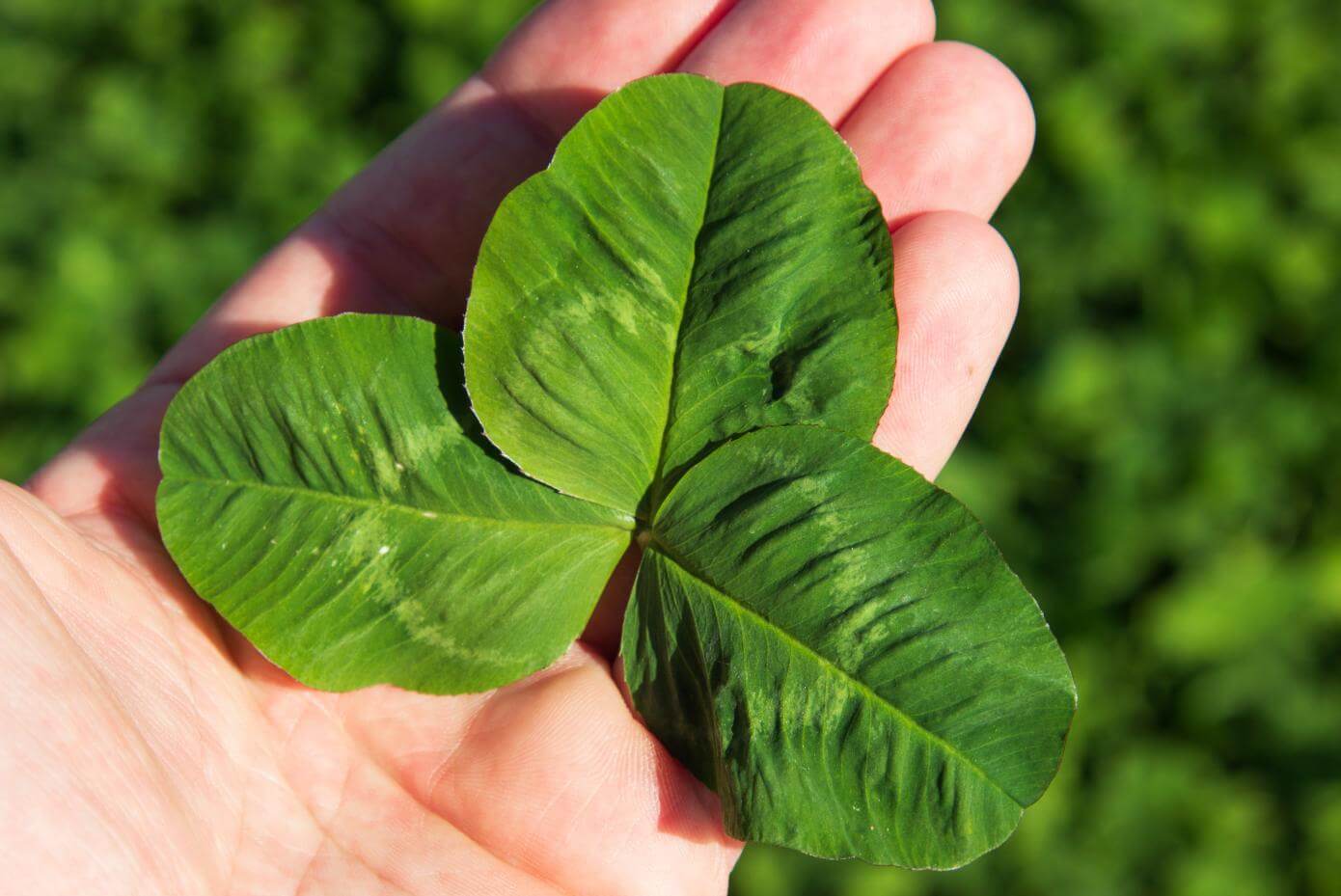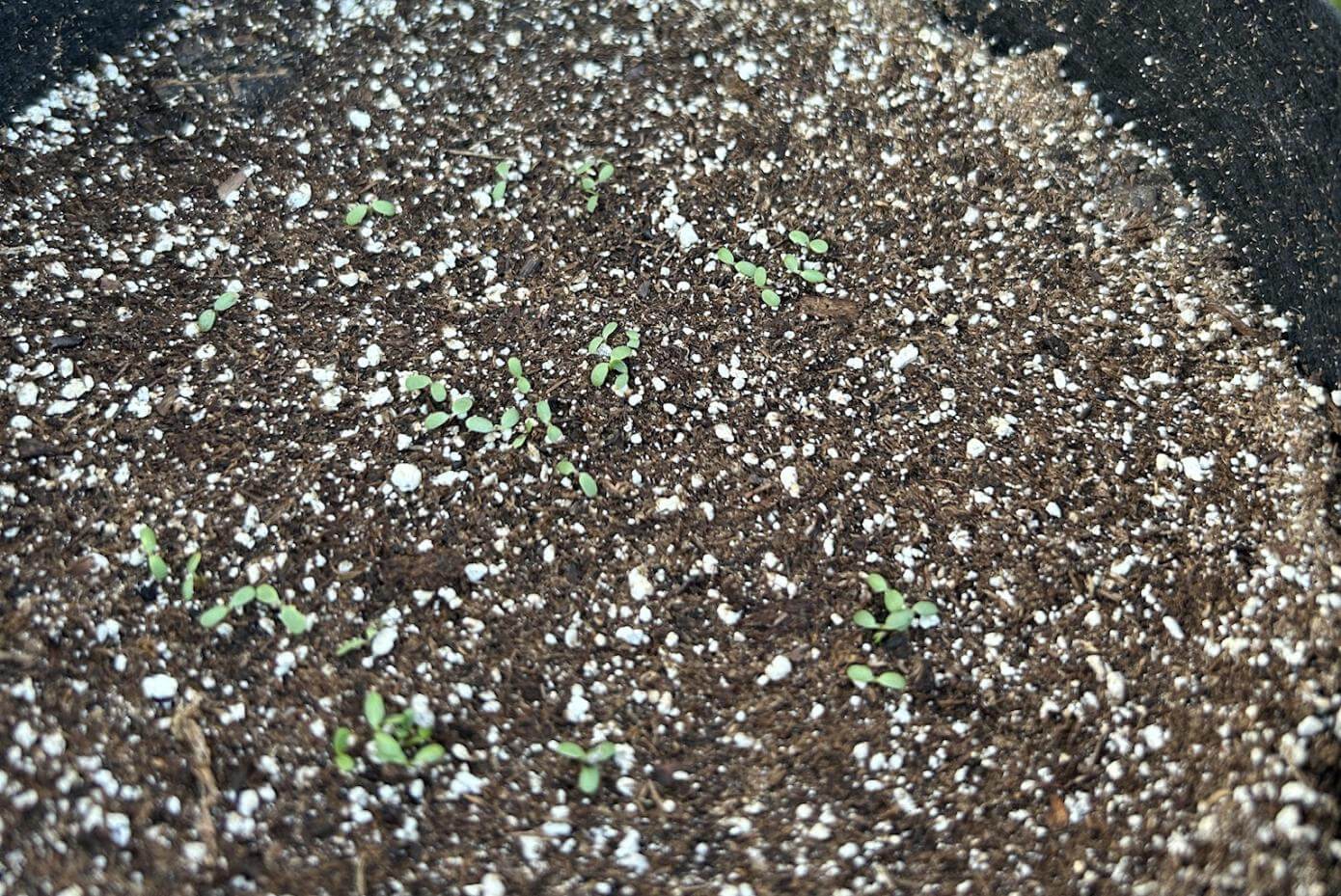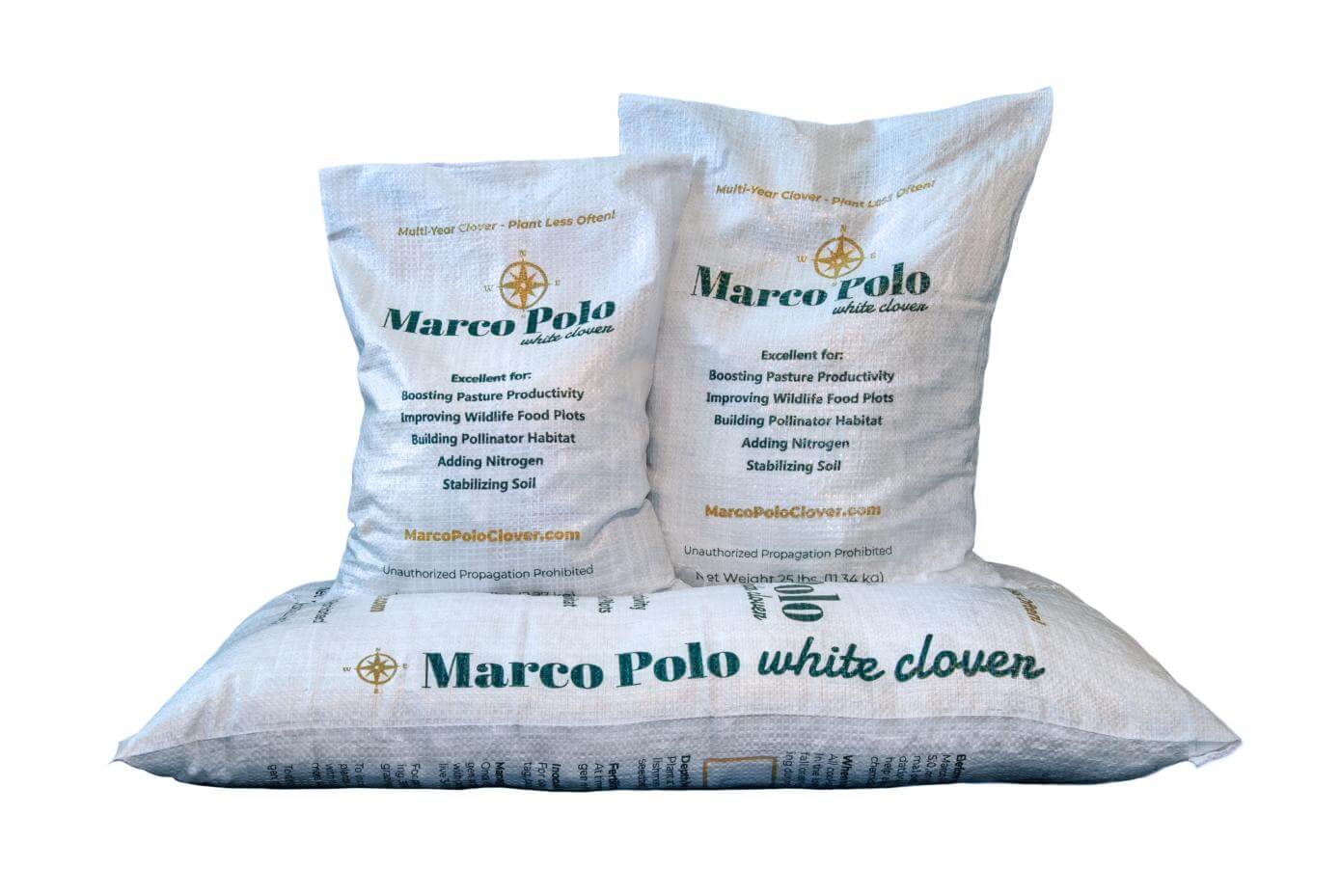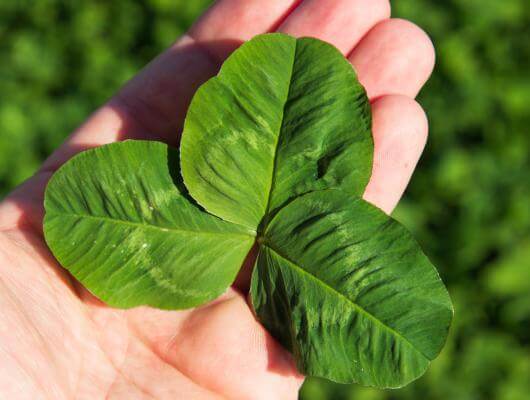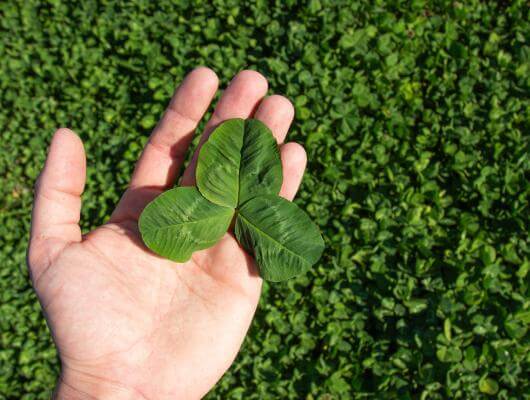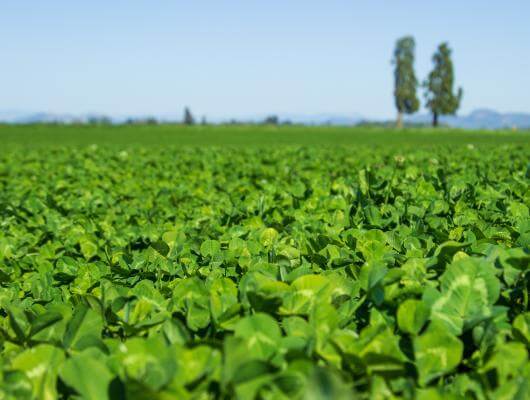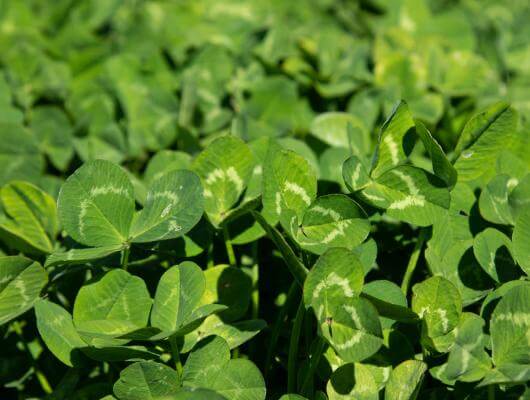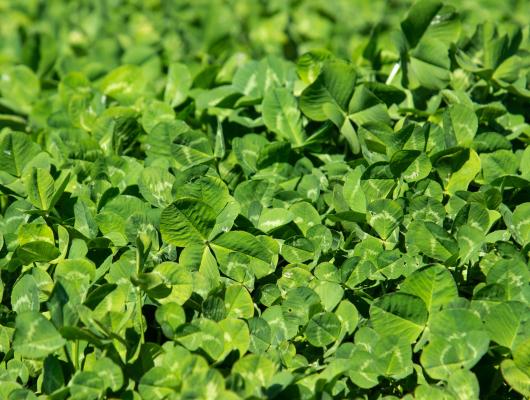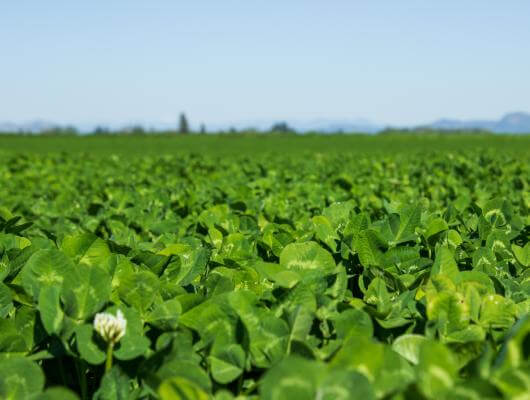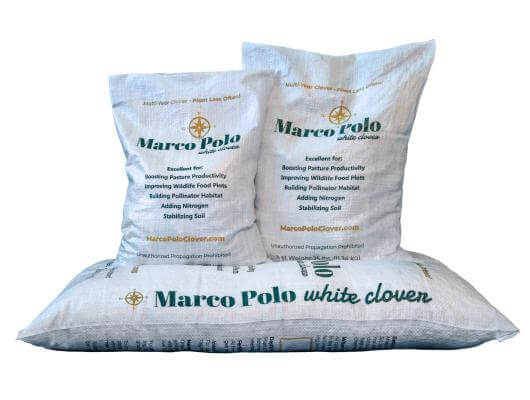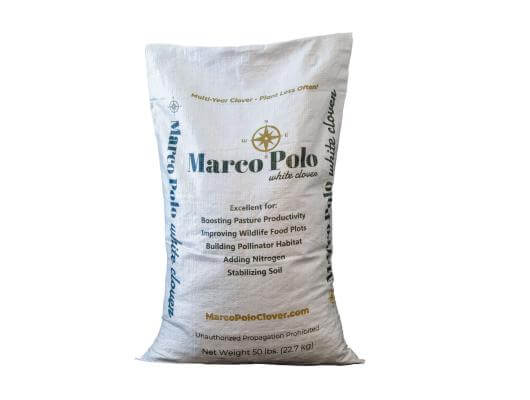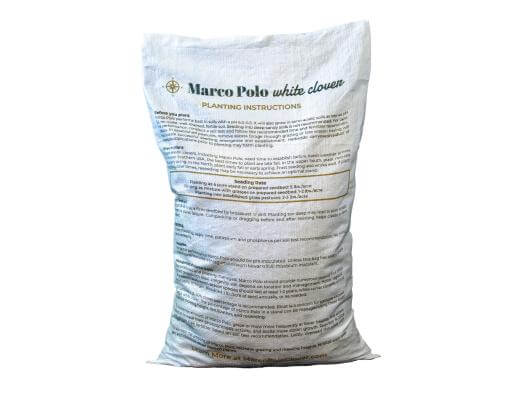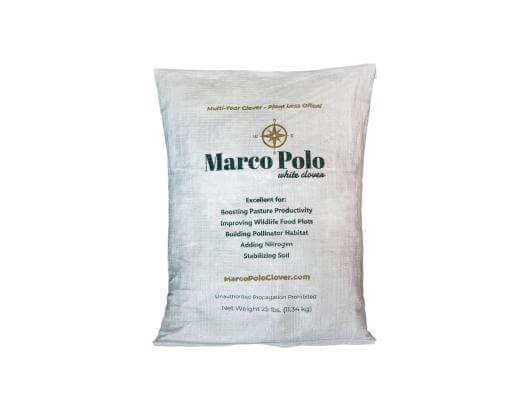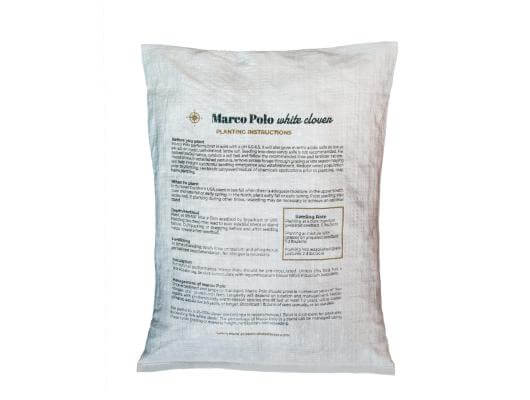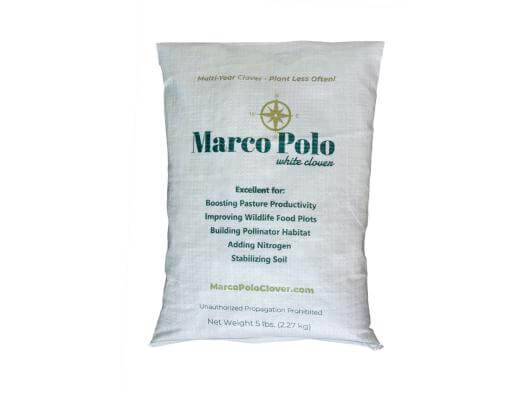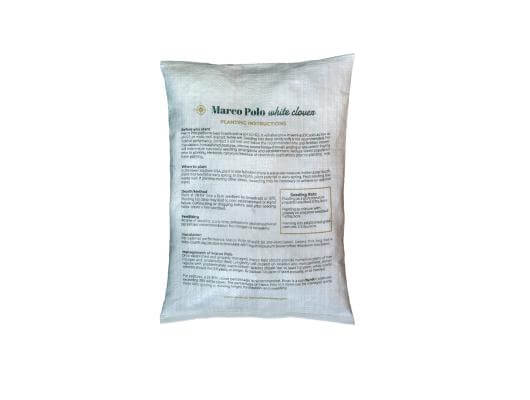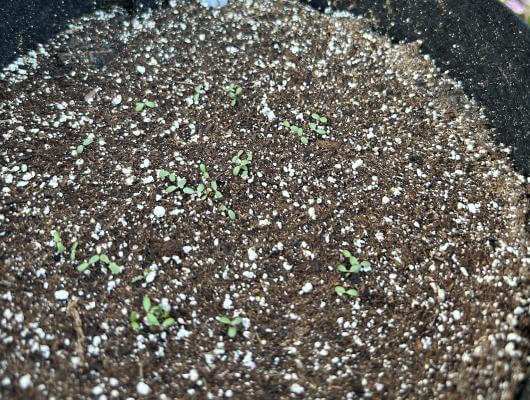Marco Polo Large-Leafed White Clover
Marco Polo is a large-leafed white clover known for quick establishment and winter growth. Use it to boost pastures, feed wildlife, attract pollinators, and stabilize soil.
Variety Summary
Marco Polo is a large-leafed white clover known for quick establishment and winter growth. It is ideal for boosting pasture productivity, improving wildlife food plots, building pollinator habit, adding nitrogen, and stabilizing the soil
Winter Active
Marco Polo was bred to be winter active, giving producers the advantage of higher total forage production for the year. Increased winter activity should also be beneficial for increasing fall wildlife activity.
In more mild climates, Marco Polo may remain active the entire winter season. Caution should be taken in colder regions where extended days of sub-freezing temperatures without snow cover are common throughout the winter months. In such locations, Marco Polo stands may experience cold damage and winter kill. In mature stands, some regrowth can be expected either from existing plants or germination of hard seed.
Multiple Uses
As stated above, Marco Polo has many uses including:
Boost Pasture Productivity
Marco Polo can help lessen the effects of endophyte toxicity and contribute to overall herd health, when planted into toxic endophyte pastures.
Nitrogen and Protein Booster
Marco Polo provides both nitrogen fixation and extra protein when sown with both cool-season and warm season grasses.
Wildlife and Pollinators
Marco Polo can be planted straight or part of a mix for wildlife food plots and pollinator habitat. It will provide abundant, protein-rich feed and prolific flowers.
Erosion Control
Marco Polo’s vigorous root system reduces erosion.
Perennial Cover Crop
Marco Polo can be used in row crops, orchards, and other to fixate nitrogen, reduce weed pressure, and build soil health.
Management of Marco Polo
Once established and properly managed, Marco Polo should provide numerous years of free nitrogen and protein-rich feed. Longevity will depend on location and management. In hotter regions with predominately warm-season species, Marco Polo should last at least 1-2 years, while in cooler climates it should live 3-5 years, or longer. Broadcast 1 lb/acre of seed annually, or as needed.
For pastures, a 25-30% clover percentage is recommended. Bloat is a concern for pastures exceeding 35% white clover. The percentage of Marco Polo in a stand can be managed using these tools: grazing or mowing height, fertilization, and reseeding.
To increase the amount of Marco Polo: Graze or mow more frequently at lower heights. This allows Marco Polo plants to increase their photosynthesis activity, and excite more stolon growth. Regularly fertilize with nitrogen-free fertilizer based on soil test recommendation. Lastly, overseed thin areas with more Marco Polo.
To decrease the amount of Marco Polo: Increase grazing and mowing heights, fertilize with nitrogen, and introduce other desired plants.
Testimonials
Best clover we have planted in 40 years of trying different types. Deer and turkeys love it. Mix it with a little crimson and ring the dinner bell. Planted first stand 5 years ago and need to replant it. Killed best buck on property last year. We have about 6 acres planted now and looking to expand.
Planting Instructions
Before you plant
Marco Polo performs best in soils with a pH 6.0-6.5. It will also grow in semi-acidic soils as low as pH 5.0, on moist, well-drained, fertile soil. Seeding into deep sandy soils is not recommended. For optimal performance, conduct a soil test and follow the recommended lime and fertilizer recommendations. In established pastures, remove excess forage through grazing or late season haying will help ensure successful seedling emergence and establishment. Reduce weed population prior to planting. Herbicide carryover/residual of chemicals applications prior to planting may harm planting.
Depth/Method
Plant into a firm seedbed by broadcast or drill. Planting too deep may lead to poor establishment or stand failure. Cultipacking or dragging before and after seeding helps create a firm seedbed.
Inoculation
For optimal performance, Marco Polo should be pre-inoculated. Unless seed has a Nitro-Coat® tag, be sure to inoculate with leguminosarum biovar trifolii rhizobium inoculant.
Seeding Rate
Planting Dates
Planting Map
Planting Depth
1/8-1/4"
Optimal pH
6.0-6.5
Fertilizer
Apply lime, potassium and phosphorus per soil test. No nitrogen is necessary.
